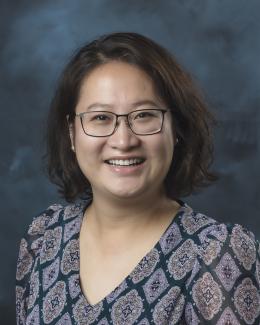
Bio
I joined ORNL in the fall of 2022 as a Distinguished Staff Fellow at the Center for Nanophase Materials and Sciences (CNMS). My primary research interests are in fundamental and applied science of macromolecular interactions in bulk and at interface, particularly with renewable macromolecules. Through understanding the material forming and assembling mechanism using multiscale characterizations, we aim to develop controlled processes for material formation based on the principle of chemistry, as well as adding robustness and/or new functionality to the reassembled materials.
With a PhD in Fiber and Polymer Science from NC State, my dissertation research focused on low energy bio-based carbon capture technology using aqueous solvents and facilitated water-liquid-gas contact through restricting water transportation in structural materials. In 2019, through an internship at the Center for Structural Molecular Biology (CSMB), ORNL, we reported the first deuterated chitosan from filamentous fungi with novel deuteration approaches. I conducted research in Nanotechnology Innovation Center at Kansas State (NICKS) when accomplishing my master degree in Textile Science at Kansas State University. The research projects mainly focused on functionalizing polymers to obtain advanced materials with nanoscale features for superhydrophobicity and antimicrobial properties, as well as the study of the interactions between water and solid surface. Prior to joining ORNL, I worked as a tech consultant in RTI International, a non-profit research institute, to support federal and industrial clients on chemicals and manufacturing in fields including clean energy.
The dissertation research introduced a new category of material that has hierarchical structure and biocatalytic function. These novel materials are nontoxic, renewable, and biodegradable and have potential for scaling up. The “drop-in” biocatalytic reactor design will benefit low-energy, low-cost post combustion carbon dioxide capture operations without redesigning the gas scrubbing unit in power plants. The study also uncovered the mechanism of enhanced catalyzed reactions at liquid–gas–solid interfaces.
Professional Experience
2022.11 - Present DSF Fellow, Center for Nanophase Materials Sciences, ORNL
2022.3 - 2022.11 Innovation Analyst, RTI International Innovation Advisor
2019.5 - 2019.8 NESLS graduate intern, Center for Structural Molecular Biology, ORNL
2017-2022 Graduate Research Assistant and Postdoctoral researcher, NC State
2015-2017 Graduate Research Assistant, KSU
Awards
ORNL’s Top 10 Science Achievements at SNS and HFIR of 2022
American Association of Textile Chemists and Colorists (AATCC) Student Research Support Grant, 2019
Ellen Rohde Leadership Initiative Professional Development Grant, 2018
Science Communication Fellow (Manhattan, KS), 2016-2017
Textile Scholarship / Joseph H. Jones Scholarship / Olive J. Ubel Scholarship, 2015-2017
National Scholarship by the Ministry of Education, China, 2011
National “Textile Vision” Scholarship by the Ministry of Textile Industry, China, 2011
Education
Ph.D. Fiber and Polymer Science/Biochemistry, North Carolina State University (2021)
M.S. Textile Science, affiliated with Nanotechnology Innovation Center of Kansas State, Kansas State University (2016)
B.E. Apparel Engineering, Wuhan Textile University (2013)
Professional Service
AIChE - Forest and Plant Bioproduct Division
Georgia Institute of Technology - Doctoral student research committee (MSE and CBE)
Professional Affiliations
American Institute of Chemical Engineers (AIChE)
American Chemical Society (ACS)
Trademarks and Patents
S. Salmon and Y. Yuan. “Chitosan materials with entrapped enzyme and biocatalytic textiles and other biocatalytic materials comprising same.” US Patent No. 11,607,345 B2, 2023 (Issued)
S. Salmon, J. Shen and Y. Yuan. “Textile gas-liquid-solid contactors and biocatalytic materials and methods comprising same. U.S. Patent Application Serial No. 63/197,584, 2021 (provisional)

